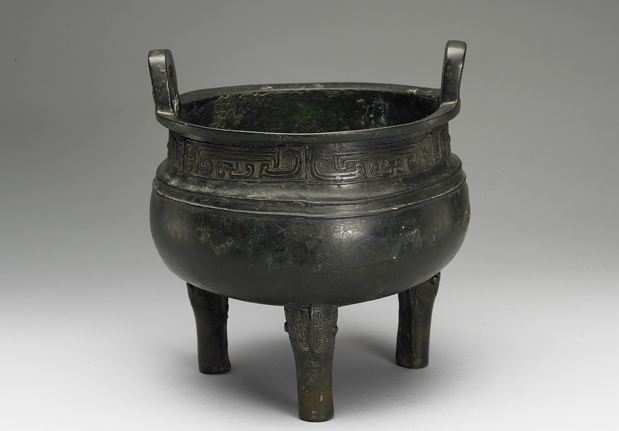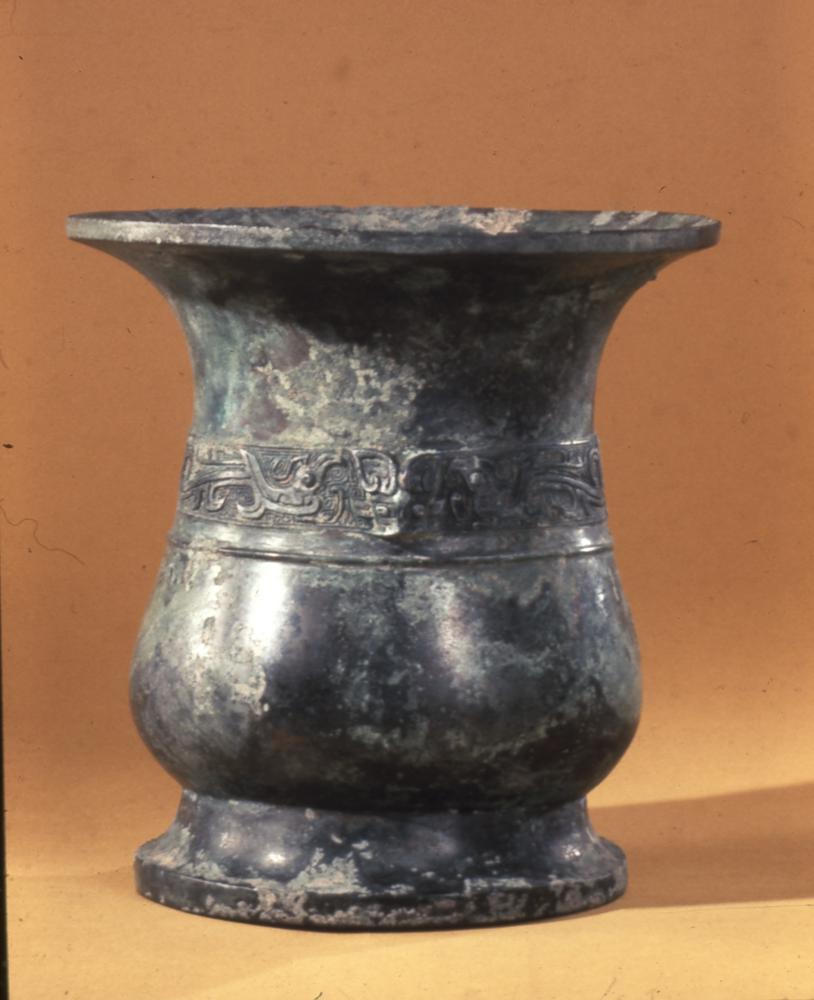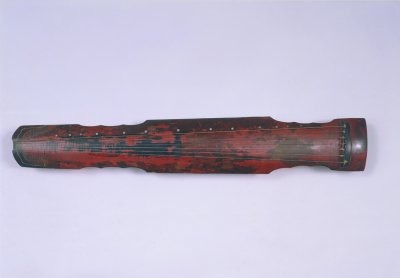Period:Unknown Production date:918-1392
Materials:bronze
Technique:
Subjects:boat/ship dragon
Dimensions:Diameter: 17.30 centimetres Weight: 567 grammes Thickness: 0.60 centimetres
Description:
Bronze mirror (octafoliate). With moulded decoration of a scene of ship menaced by a dragon, the legend of Ci Fei the dragon-slayer.
IMG
![图片[1]-mirror(황비창천명능형동경皇昌天銘稜形銅鏡) BM-1926-0407.10-China Archive](https://chinaarchive.net/Unknown/Bronzes/mid_00009046_001.jpg)
![图片[2]-mirror(황비창천명능형동경皇昌天銘稜形銅鏡) BM-1926-0407.10-China Archive](https://chinaarchive.net/Unknown/Bronzes/mid_01027694_001.jpg)
Comments:(Note added by Jan Stuart, July 2009)The place of production of mirrors with this design is a subject of debate among scholars. Examples are known in both China and Korea, and several such mirrors have been excavated from tombs in both China and Korea. Youngsook Pak, in her book, ‘Korean Art 5th to 19th Century from European Museums and Collections’ (Ingelheim am Rhein, 1984) assigns similar mirrors to Korean manufacture. However, the casting of the mirror, including the sharp edges and the color of the metal, as well as the documented history of similar mirrors in China are evidence of Chinese manufacture. Rose Kerr in her book ‘Later Chinese Bronzes’ (Bamboo Publishing in Association with the Victoria and Albert Museum, 1990) assigns mirrors of this design to Chinese manufacture, as does Ju-hsi Chou in his book ‘Circles of Reflection: the Carter Collection of Chinese Bronze Mirrors’ (Cleveland Museum of Art, 2000). The V&A has three examples of this type, the Cleveland Museum has one, and the BM has two with this design. Chou Ju-hsi gives solid evidence and citations from Chinese reports for the spread of these mirrors in north-east China and Korea. As he says on page 85, “In short, this type of mirror may have emerged before the last years of the Northern Song period in China, and subsequently spread throughout the broad territories of northern China under the Jin as well as to Korea.” This mirror used to be identified as “Korean” in museum records and was changed to “Chinese” manufacture in 2009. A museum record previously stated the story depicted is “T’an T’ai” [Tan Tai Mie Ming 澹臺滅明], but Chou Ju-hsi has given the identification of the story as Ci Fei (佽 非) , the dragon-slayer, and the presence of the sword in the raised arm of a man in the prow of the boat and the menacing pose of the dragon support this theme. 2016 National Research Institute of Cultural Heritage catalogue entries:’This bronze mirror was discovered broken in four pieces and restored to its current state.There is a round, unadorned knob at the center of the mirror, above which there is an inscription of four characters “煌丕昌天”, which literally means “a brightly shining and flourishing sky.” The inscription symbolizes cultural exchanges between Goryeo and China. The mirror is also decorated with a design of a boat carrying five people (three at the bow and two at the stern), all of whom have their hair tied up, and one of whom is holding a sword high; while a dragon is depicted opening its mouth in front of the boat, and the heads of a seal and a carp can be seen emerging from the waves.”4개의 편으로 깨진 것을 접합하였다. 수리한 것임에도 문양이 뚜렷하게 주조되어 상태가 매우 양호하다. 한 척의 배가 사람들을 싣고 높은 풍랑 속에 돛을 휘날리며 항해 중인 모습을 표현한 금金나라 계통의 동경이다. 뉴 상단 중앙의 ‘황비창천皇昌天’ 명문은 ‘밝게 빛나고 창성한 세상’이라는 뜻으로 고려시대 대중국 교류의 상징물로 평가되고 있다. 파도를 헤치고 나아가는 배 앞으로 용 한 마리가 입을 벌리고 있다. 뱃머리에는 머리를 위로 묶은 3명의 인물이 있으며, 그 중의 한명은 검을 높이 치켜들었다. 선미에도 같은 자세의 두 사람이 보인다. 파도 속에 물개, 잉어가 고개를 내밀고 있으며 포말을 꽃 모양처럼 경쾌하게 표현하고 있는 것이 특징이다.’
Materials:bronze
Technique:
Subjects:boat/ship dragon
Dimensions:Diameter: 17.30 centimetres Weight: 567 grammes Thickness: 0.60 centimetres
Description:
Bronze mirror (octafoliate). With moulded decoration of a scene of ship menaced by a dragon, the legend of Ci Fei the dragon-slayer.
IMG
![图片[1]-mirror(황비창천명능형동경皇昌天銘稜形銅鏡) BM-1926-0407.10-China Archive](https://chinaarchive.net/Unknown/Bronzes/mid_00009046_001.jpg)
![图片[2]-mirror(황비창천명능형동경皇昌天銘稜形銅鏡) BM-1926-0407.10-China Archive](https://chinaarchive.net/Unknown/Bronzes/mid_01027694_001.jpg)
Comments:(Note added by Jan Stuart, July 2009)The place of production of mirrors with this design is a subject of debate among scholars. Examples are known in both China and Korea, and several such mirrors have been excavated from tombs in both China and Korea. Youngsook Pak, in her book, ‘Korean Art 5th to 19th Century from European Museums and Collections’ (Ingelheim am Rhein, 1984) assigns similar mirrors to Korean manufacture. However, the casting of the mirror, including the sharp edges and the color of the metal, as well as the documented history of similar mirrors in China are evidence of Chinese manufacture. Rose Kerr in her book ‘Later Chinese Bronzes’ (Bamboo Publishing in Association with the Victoria and Albert Museum, 1990) assigns mirrors of this design to Chinese manufacture, as does Ju-hsi Chou in his book ‘Circles of Reflection: the Carter Collection of Chinese Bronze Mirrors’ (Cleveland Museum of Art, 2000). The V&A has three examples of this type, the Cleveland Museum has one, and the BM has two with this design. Chou Ju-hsi gives solid evidence and citations from Chinese reports for the spread of these mirrors in north-east China and Korea. As he says on page 85, “In short, this type of mirror may have emerged before the last years of the Northern Song period in China, and subsequently spread throughout the broad territories of northern China under the Jin as well as to Korea.” This mirror used to be identified as “Korean” in museum records and was changed to “Chinese” manufacture in 2009. A museum record previously stated the story depicted is “T’an T’ai” [Tan Tai Mie Ming 澹臺滅明], but Chou Ju-hsi has given the identification of the story as Ci Fei (佽 非) , the dragon-slayer, and the presence of the sword in the raised arm of a man in the prow of the boat and the menacing pose of the dragon support this theme. 2016 National Research Institute of Cultural Heritage catalogue entries:’This bronze mirror was discovered broken in four pieces and restored to its current state.There is a round, unadorned knob at the center of the mirror, above which there is an inscription of four characters “煌丕昌天”, which literally means “a brightly shining and flourishing sky.” The inscription symbolizes cultural exchanges between Goryeo and China. The mirror is also decorated with a design of a boat carrying five people (three at the bow and two at the stern), all of whom have their hair tied up, and one of whom is holding a sword high; while a dragon is depicted opening its mouth in front of the boat, and the heads of a seal and a carp can be seen emerging from the waves.”4개의 편으로 깨진 것을 접합하였다. 수리한 것임에도 문양이 뚜렷하게 주조되어 상태가 매우 양호하다. 한 척의 배가 사람들을 싣고 높은 풍랑 속에 돛을 휘날리며 항해 중인 모습을 표현한 금金나라 계통의 동경이다. 뉴 상단 중앙의 ‘황비창천皇昌天’ 명문은 ‘밝게 빛나고 창성한 세상’이라는 뜻으로 고려시대 대중국 교류의 상징물로 평가되고 있다. 파도를 헤치고 나아가는 배 앞으로 용 한 마리가 입을 벌리고 있다. 뱃머리에는 머리를 위로 묶은 3명의 인물이 있으며, 그 중의 한명은 검을 높이 치켜들었다. 선미에도 같은 자세의 두 사람이 보인다. 파도 속에 물개, 잉어가 고개를 내밀고 있으며 포말을 꽃 모양처럼 경쾌하게 표현하고 있는 것이 특징이다.’
© Copyright
The copyright of the article belongs to the author, please keep the original link for reprinting.
THE END





